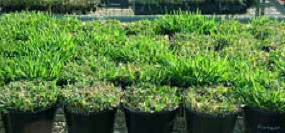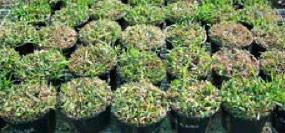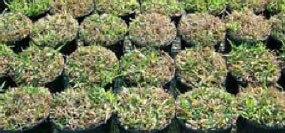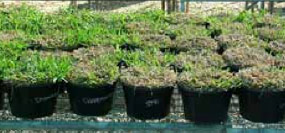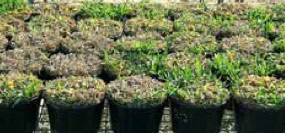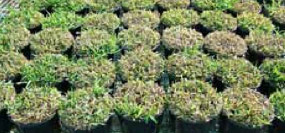How disease resistant are the different types of Buffalo Grass and Turf? Matilda Turf proves to be the most tolerant to disease.
Disease Resistance
Grey leaf spot caused by Pyricularia grisea affects some varieties more than others (Atilano and Busey, 1983), and is particularly prevalent during warm moist humid weather conducive to disease development. A number of other known root disease complexes were also encountered on buffalo grass in various project activities including at regional sites during 2007. Samples of these were examined by Dr Percy Wong (Camden, NSW) who was able to identify some of the causal organisms.
- Gaeumannomyces incrustans, Codinaea species, and two non-sporulating fungi were isolated from badly diseased plots of ‘Sir James’ at UWA (Perth). Other cultivars displayed little or no infections.
- A Fusarium species, a slow-growing black fungus, and a slow-growing white fungus were isolated from the Canberra plots (Plate 8.12). In this case, however, Kings Pride, Sir Walter and ST-26 were among the worst-affected varieties.
- Gaeumannomyces wongoonoo was isolated from samples taken from the Redlands demonstration plot of ‘Velvet’ (Plate 8.13) and pots of all cultivars prepared for herbicide experiments (Plate 8.14). In this case, Matilda appeared to be the most tolerant variety.
Effects of Gaeumannomyces wongoonoo on buffalo grass pots to be used for the shade trial at Redlands Research Station, showing apparent cultivar differences in disease tolerance arranged in approximate order of decreasing disease severity from (a) to (j) (May 2007).
